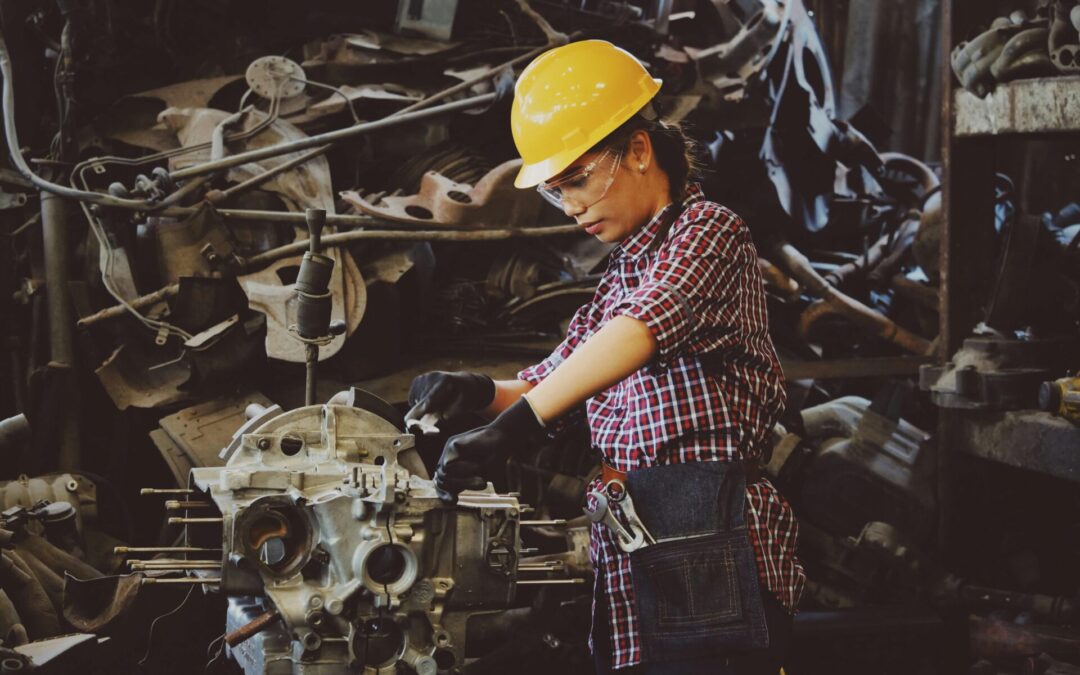Recently I sat in a meeting where the discussion was a talent shortage in critical areas. My mind typically goes to engineers, developers or fresh out of college talent, but this was not the case. The shortage was for manufacturing roles including tool and die makers, welders and machinist. I asked myself, how did we get into a vocational talent shortage? As manufacturing evolves with advancements in technology and increasing global competition, the demand for a highly skilled workforce has never been greater. Simply put, this demand is not being met, leading to a talent gap that poses a serious threat to manufacturing growth and innovation capabilities.
The Scope of the Problem
The talent shortage in manufacturing is not a new issue, but it has become more pronounced in recent years. According to a report by Deloitte and The Manufacturing Institute, the U.S. manufacturing industry is expected to have 2.1 million unfilled jobs by 2030. This gap is attributed to several factors, including the rapid retirement of Baby Boomers, the misperception of manufacturing careers, and the increasing complexity of manufacturing technologies.
Key Factors Contributing to the Talent Shortage
Aging Workforce: A significant portion of the manufacturing workforce is nearing retirement age. As these experienced workers leave, they take with them valuable skills and knowledge that are not easily replaced.
Misconceptions About Manufacturing: Many young people and their parents still perceive manufacturing jobs as low-skilled, low-paying, and physically demanding. This outdated view overlooks the modern manufacturing environment, which often involves advanced technologies and offers competitive salaries and benefits. I can tell you, many manufacturing roles pay as well as a software engineer without the sticker shock of a college degree.
Skills Gap: The advent of Industry 4.0, which encompasses automation, AI, IoT, robotics and other advanced technologies, has transformed manufacturing processes. The skills required for these new technologies are not always covered in traditional education and training programs, leaving a gap between the skills job seekers have and those employers need. Ask yourself, who is going to go onto the manufacturing floor to maintain and fix all the robots? I bet it’s not the PhD from MIT. I also bet you will pay top dollar to fix the robot.
Educational Disconnect: There is a disconnect between the skills taught in schools and the skills needed in the manufacturing industry. Many educational institutions do not offer the technical training necessary to prepare students for modern manufacturing roles. In my geography there are several high schools with focus areas on these exact vocations. With only a few visits under my belt, I have met several bright, focused and capable student, but just not enough of them for everyone.
Impact on the Industry
The shortage of skilled workers has several detrimental effects on the manufacturing sector, including decreased productivity, higher operational costs, and the inability to meet market demands. Companies are forced to delay or scale back production, which can lead to lost revenue and diminished competitiveness in the global market. Furthermore, innovation is stifled when there are not enough skilled workers to implement and manage new technologies.
Strategies to Address the Talent Shortage
Promoting Manufacturing Careers: Changing the public perception of manufacturing is crucial. Industry leaders and educators must work together to highlight the opportunities and benefits of careers in modern manufacturing. This can be achieved through outreach programs, partnerships with schools, and marketing campaigns that showcase the exciting and high-tech nature of today’s manufacturing jobs.
Investing in Education and Training: Companies and educational institutions need to collaborate to align curricula with industry needs. This includes developing apprenticeship programs, offering vocational training, and providing continuous learning opportunities for current employees. By investing in education and training, the industry can create a pipeline of skilled workers ready to take on advanced manufacturing roles.
Leveraging Technology for Training: Virtual reality (VR) and augmented reality (AR) can be used to create immersive training programs that simulate real-world manufacturing environments. These technologies can help bridge the skills gap by providing hands-on experience with advanced manufacturing processes in a controlled and safe setting. Let me be clear, VR and AR will not replace the hands on experience of an intern/apprenticeship.
Reskilling and Upskilling: For existing employees, companies should focus on reskilling and upskilling initiatives. Providing opportunities for workers to learn new skills and advance their careers within the company can help retain talent and ensure that the workforce remains adaptable to changing technologies.
Conclusion
The shortage of skilled talent in the U.S. manufacturing sector is a pressing issue that requires immediate and concerted action. By promoting manufacturing careers, investing in education and training, leveraging technology for training and focusing on reskilling and upskilling, the industry can overcome this challenge. Addressing the talent shortage is not just about filling positions; it’s about ensuring the long-term viability and competitiveness of U.S. manufacturing on the global stage.

